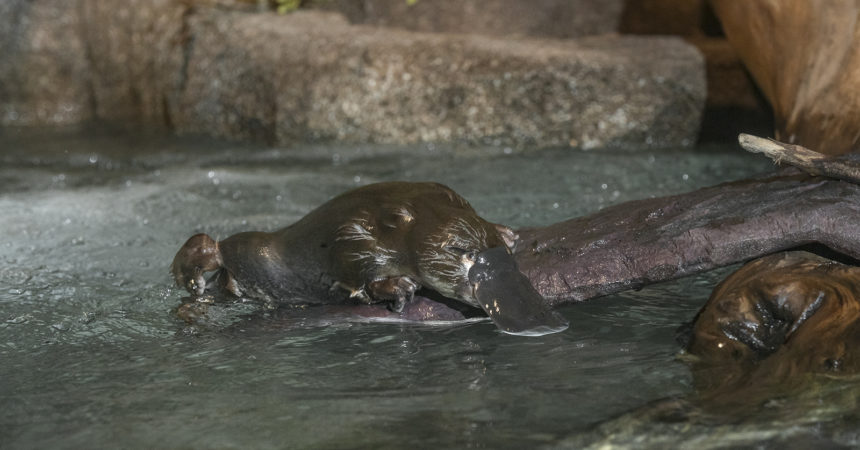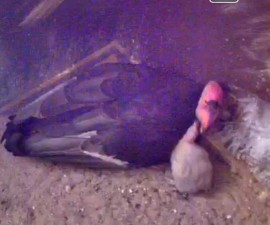Every morning when I enter the platypus exhibit, I step in quietly, so as not to wake our two Australian friends. I stuff my keys in my back pocket, so they don’t rattle; gently close doors behind me; and lower my radio and cell phone volume all the way down. When I enter the keeper area, it’s only a little after 6 a.m., and the platypuses are usually sleeping. I carefully poke my head in each nest box until I find them. I’ve learned that our female Eve likes to curl up underneath all of her bedding, and likes a little extra time “in bed” in the morning. Male Birra (short for Birrarung) sleeps on top of his bedding, and is more of an early riser.
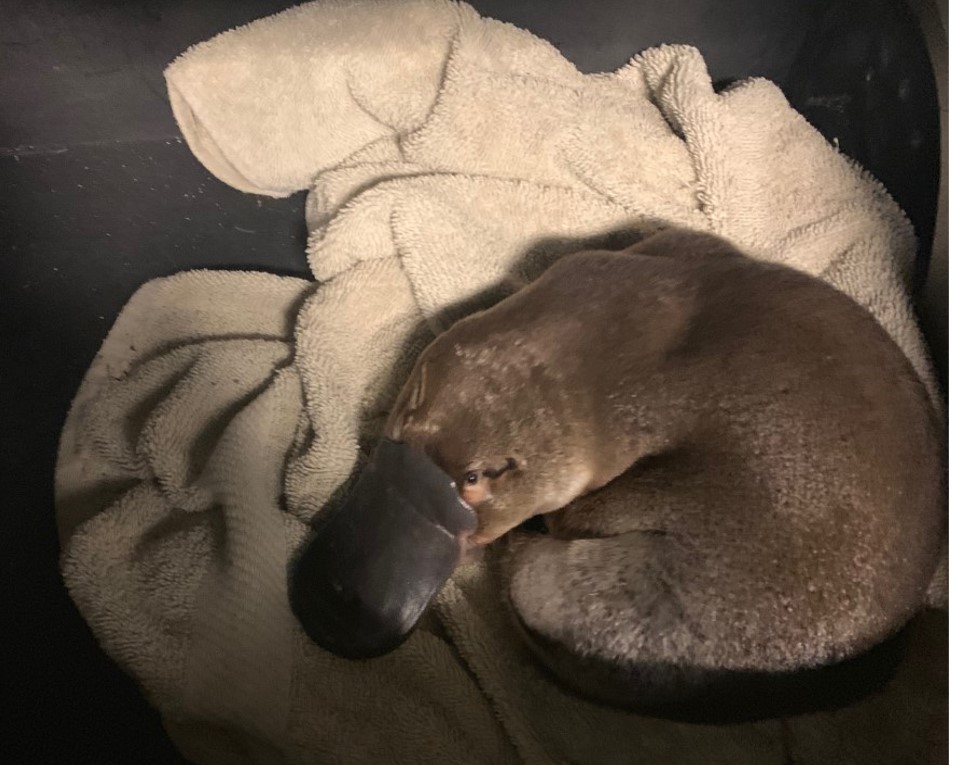
In the wild, platypuses sleep during the daytime, and are most active at dawn and dusk. At the San Diego Zoo Safari Park, we set up our lighting schedule inside the platypus exhibit so that “daytime” starts at around 10 p.m., and “sunset” starts around 8 a.m. When our platypuses start to see the lights turn up in the evening, it’s their signal that it’s time to go in and get some rest. Not only does this help our platypuses keep track of their day, it also supplies the live plants inside the building with the lighting they need to thrive. While the platypuses are still sleeping, I put on chest-high waders, grab a floating waste bin, a squeegee, and a few pool nets, and start working.
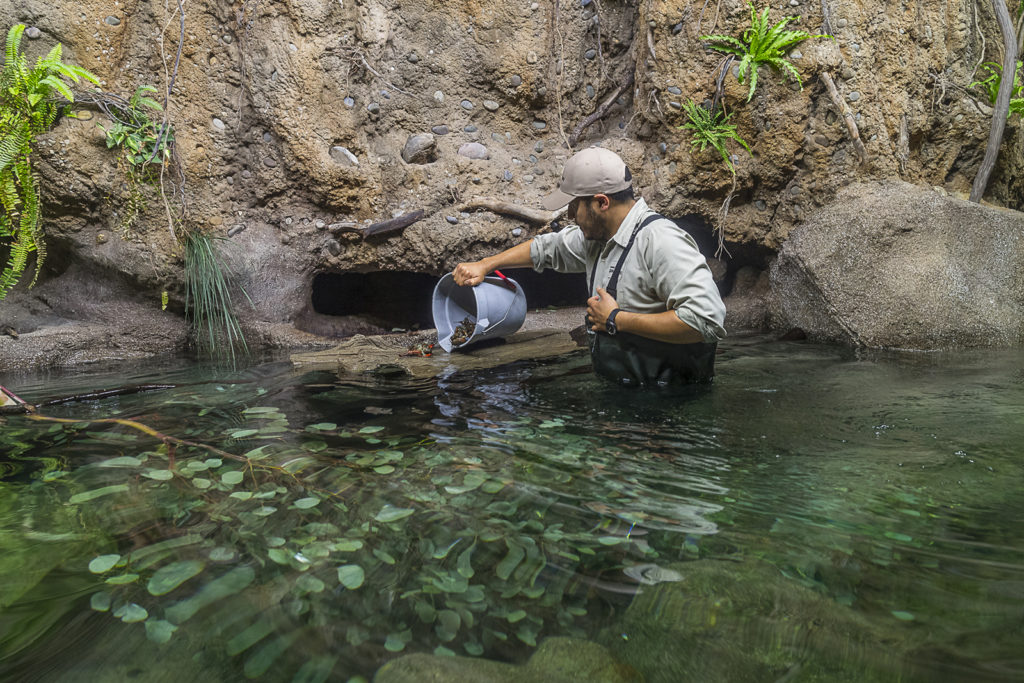
Platypuses are carnivores, and they get most of their calories from small freshwater crustaceans—crayfish. At the Safari Park, we have three different varieties to offer our platypuses. Eve enjoys the smaller, brightly colored swamp crayfish, while Birra hunts after their older, larger, mud-colored relatives.
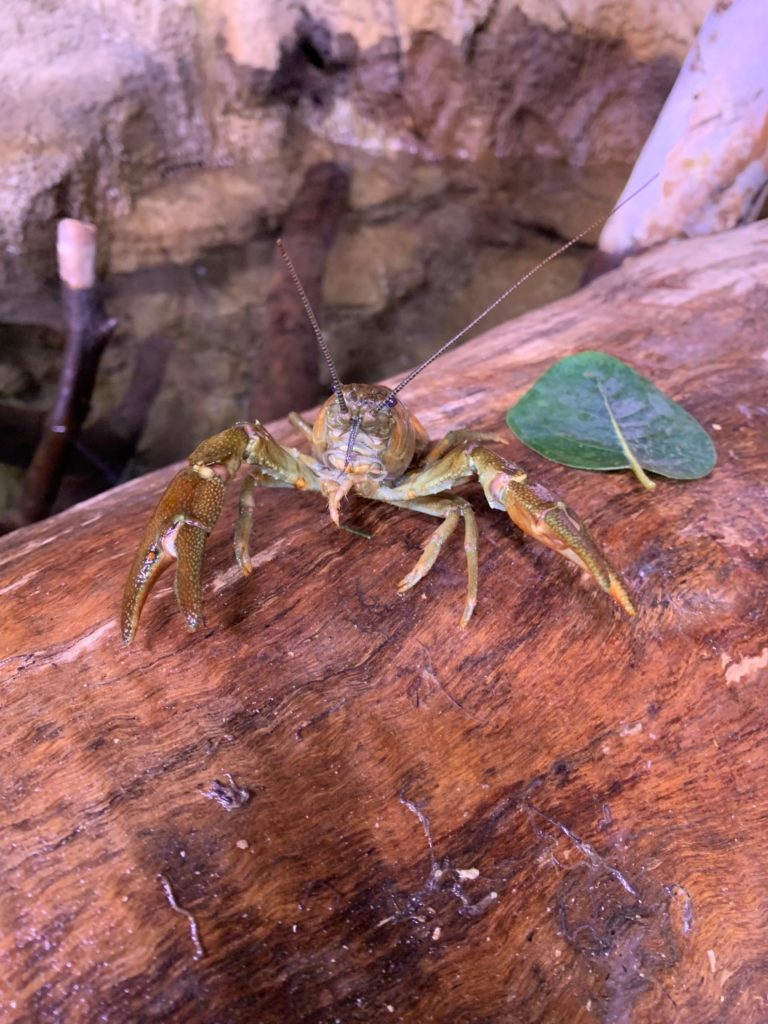
Platypuses are swift and impressive hunters in the water. When they dive, they close their eyes and ears, and they hold their breath. To locate prey, they rely completely on sensitive electroreceptors that are spread out over their duck-like bill. These receptors can detect minute electrical signals emitted by their prey.
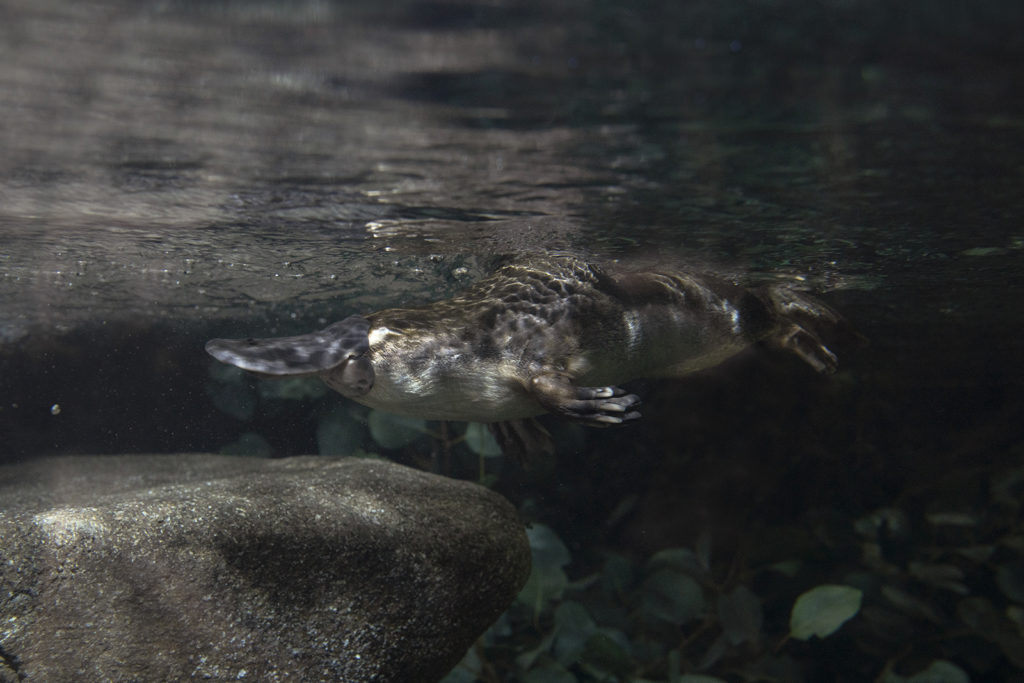
In addition to the crayfish, we offer Eve and Birra mealworms (another one of Birra’s favorites), black worms, earthworms, ghost shrimp, and crickets. As their food has to be alive for them to find it, becoming a platypus keeper also meant that I became an invertebrate keeper! So after I clean out the pools and replenish our supply of crayfish and other food items, I start the process of feeding and looking after our community of crayfish. On average, we have about 250 crayfish in holding.
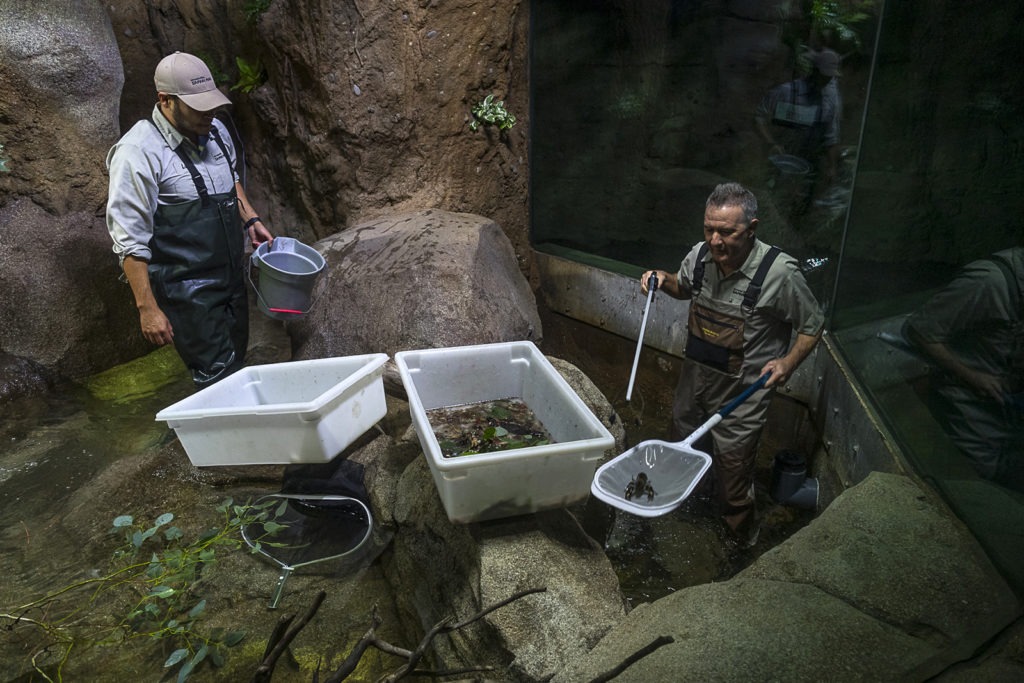
By 9 a.m., the lighting system has gone through its sunset cycle, and the platypuses have usually left their nest boxes to explore the pools. Platypuses can forage for up to 14 hours a day, and they usually get to work right away. When they aren’t foraging, you might find Eve surface swimming or hanging out below the waterfalls in the deep pool. Her favorite spots seem to involve lots of water turbulence. Birra likes to swim, or sometimes even hang out among the fresh eucalyptus branches we regularly provide in the pools.
I’ve had the privilege of working with these platypuses since they arrived in the US in late October. It wasn’t announced until the animals had settled in and the exhibit opened, but now it’s hard to get me to stop talking about these special animals. Sometimes I make my way to the guest side of the exhibit during Park hours, and I hear the excitement as visitors get an up-close look at this unique species. There is sometimes a wait to get in to see them during busy days, but I always remind people that no matter the wait, it’s a lot less time than flying over to Australia!
Luis Ochoa is a senior keeper at the San Diego Zoo Safari Park.

